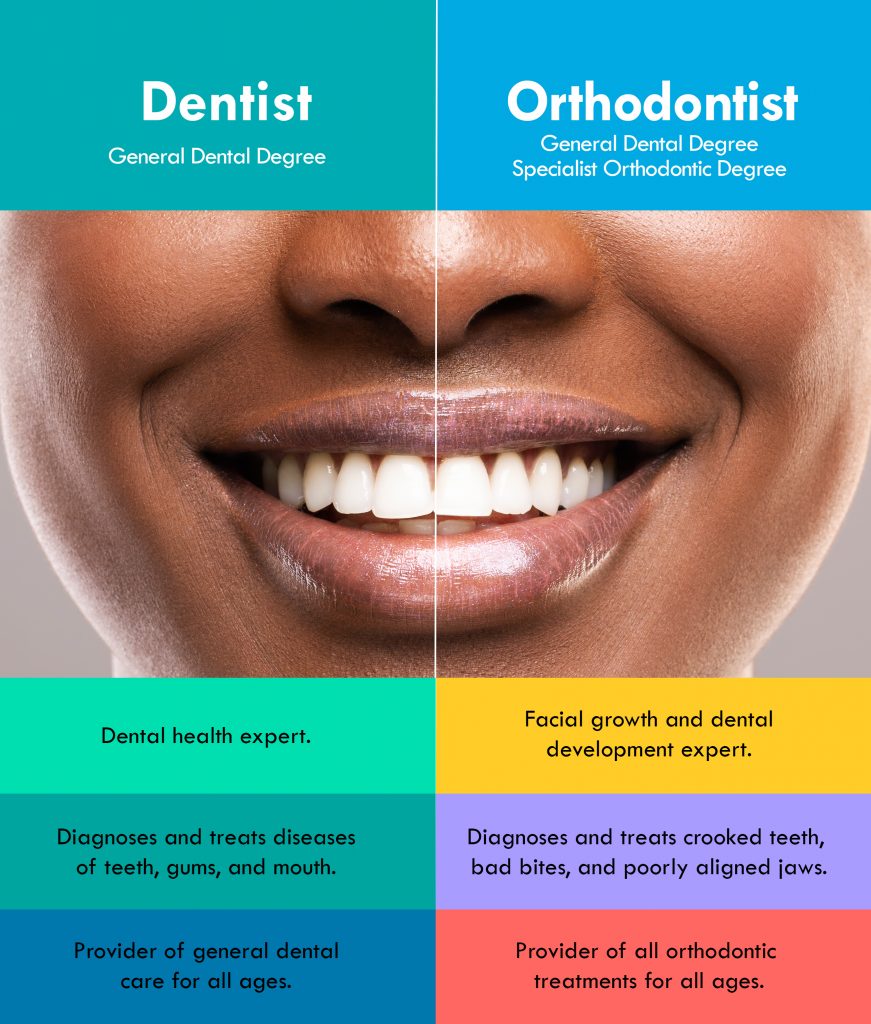5 Simple Techniques For Legacy Orthodontics
5 Simple Techniques For Legacy Orthodontics
Blog Article
The 7-Minute Rule for Legacy Orthodontics
Table of Contents6 Simple Techniques For Legacy OrthodonticsThe Ultimate Guide To Legacy OrthodonticsGetting The Legacy Orthodontics To WorkSome Of Legacy OrthodonticsThe Best Strategy To Use For Legacy Orthodontics
In enhancement, we supply adjustable treatment routines, adaptable payment alternatives and a fun, enjoyable experience.An orthodontist is a dental professional educated to identify, prevent, and treat teeth and jaw abnormalities. They correct existing conditions and are trained to identify issues that may establish in the future. Orthodontists collaborate with individuals of all ages, from kids to grownups. People frequently associate an excellent smile with healthiness.
Malocclusion, or misaligned teeth, can lead to dental problems, consisting of tooth degeneration, gum condition, and difficult or agonizing eating. Not every person is birthed with straight teeth. If you have a bad bite or large areas in between your teeth, you may desire to seek advice from a dental professional focusing on orthodontic care.
The Ultimate Guide To Legacy Orthodontics
( Picture Credit Scores: DigitalVision/Getty Images) Orthodontists make use of fixed and removable dental devices, like braces, retainers, and bands, to alter the placement of teeth in your mouth. Orthodontic treatment is for dental abnormalities, including: Jagged teethBite issues, like an overbite or an underbiteCrowded teeth or teeth that are too much apartJaw misalignmentThe objective of orthodontic therapy is to improve your bite.
A healthy and balanced bite guarantees you can eat, chew, and speak properly. While you could assume of orthodontists as mainly for kids or teenagers that require dental braces, they can fix dental troubles at any kind of age. Orthodontists participate in college, dental college, and orthodontic school. After graduation, they invest 2 or 3 years in an orthodontic residency program.
, however not all dentists are orthodontists. They focus on two areas: Just how to effectively and securely move teeth Exactly how to effectively guide growth in the teeth, jaw, and faceOnce an orthodontist has actually finished training, they have the alternative to end up being board accredited.
Some Ideas on Legacy Orthodontics You Need To Know
Misalignment, or malocclusion, is one of the most usual factor individuals see an orthodontist. It is hereditary and is the result of dimension distinctions in between the upper and reduced jaw or in between the jaw and teeth. Malocclusion leads to tooth congestion, a misshapen jaw, or uneven bite patterns. Malocclusion is typically treated with: Your orthodontist connects metal, ceramic, or plastic square bonds to your teeth.
Some people require a headwear to assist move teeth into line with pressure from outside the mouth. A retainer is a custom-made device that keeps your teeth in area.
They're usually made use of on youngsters. They can create additional area in the mouth without needing to pull teeth. If you have a major underbite or overbite, you might need orthognathic surgical procedure (also called orthodontic surgical treatment) to extend or reduce your jaw. Orthodontists make use of cables, medical screws, or plates to sustain your jaw bone.
You might need to see an orthodontist if you have: Crowding or otherwise sufficient room for every one of your teethOverbite, when your top teeth come your bottom teethUnderbite, when your base teeth are too far forwardSpacing or problems with gapsCrossbite, which is when your upper teeth fit behind your base teeth when your mouth is closedOpen bite or an upright void in between your front bottom and top teethMisplaced midline, when the facility of your base and top teeth don't align Correcting a dental malocclusion can: Make attacking, eating, and speaking easierImprove the symmetry of our face and your total appearanceEase discomfort from temporomandibular joint conditionsDifferent your teeth and make them much easier to clean, helping prevent tooth degeneration or cavities It's frequently a dentist who first notices misaligned teeth during a regular examination.
The Only Guide for Legacy Orthodontics

Throughout your first orthodontic consultation, you'll likely have: A dental examPhotos taken of your face and smileDental X-raysPanoramic (360 degree) X-rays of your face and headImpressions to develop mold and mildews of your teethThese examinations will certainly aid your orthodontist know how to continue with your treatment. clear braces. An orthodontist is a dental expert who's had training to treat your teeth and jaw
An orthodontist is concentrated on your bite, so something like a damaged tooth would certainly be managed by a dental practitioner. Orthodontists are focused on your bite, or the way your teeth fit with each other, and the straightness of your teeth.
Ever before questioned just how stars constantly seem to have completely aligned teeth? The answer often depends on the knowledgeable hands of an orthodontist. However just what does an orthodontist do? Orthodontists are oral experts that focus on dealing with irregularities in the teeth and jaws. Their proficiency exceeds just producing a beautiful smile; it includes improving your general dental wellness and function.
Unknown Facts About Legacy Orthodontics

While braces are one of the most commonly recognized orthodontic therapy, orthodontists have a varied toolkit at their disposal. The particular approach chosen depends upon the seriousness of the situation, the client's age, and individual preferences. These tried-and-true dental braces utilize a system of braces bonded to the teeth and linked by wires.
Clear aligners, like Invisalign, are a preferred alternative for clients looking for an extra very discreet therapy alternative. These detachable trays are customized to considerably change the teeth's placement. Headwear may be used combined with braces or aligners to apply added targeted pressures, especially for correcting jaw inconsistencies. In situations of narrow jaws, palatal expanders can be made use of to develop room for proper tooth placement.
Report this page